| IMAGE COPYRIGHT AND LICENCES |
 |
|
If you've ever searched for an image online, you've probably come across the different licenses attached to them, from Public Domain, to Fair Use, to All Rights Reserved. And if you're like most people, you're unsure exactly what all those different terms mean, how they relate to copyrights, and how they affect you and your reason for using the image.
At KeenART Media, we require any images uploaded for printing to either be the copyright property of the account holder, or have permission to reproduce granted by the copyright holder.
This article takes a look at copyright, many of the different licenses that may be attached to images, and what happens if you use those images incorrectly. We will primarily be considering images found on the internet, and the dissemination of these images to an online audience.
|
SUMMARY
| WHAT IS COPYRIGHT |
RIGHTS AND LICENCES |
CONSEQUENCES |
| Copyright is the legal right attributed upon creation to the author of an original work, be it photograph, painting, story, or digital design. |
The image licenses and rights that pertain to copyright law include: public domain, fair use policy, creative commons, and all rights reserved. |
The consequences of posting images that are not your own online include having your website taken down, monetary fines, and court appearances. |
|
| WHAT IS COPYRIGHT?
|
 |
|
Established long before the advent of digital cameras and "selfies", copyright laws were developed to encourage creation and creative expression by authors (this includes creators of stories, photographs, paintings, or digital designs). With copyright falling into place the second an artist finishes a painting, it takes a bit of a load off - they can worry less about someone stealing or copying their invention, and know they are legally protected if someone does.
And they don't have to paint that little © in the bottom corner of their work in order for copyright to apply. If you made it from scratch (as opposed to altering an existing image), you hold the copyright. And in that case, you have four exclusive rights (as laid out by the Copyright Law of the United States of America):
- The right to reproduce the work
- The right to publicly display the work
- The right to create work derivative (new, altered version) of the copyright work
- The right to distribute the work through sale, rental, or loan, and allow others to display the work
Copyright allows the creator of the image some legal coverage should someone swipe a photo they posted on their portfolio, blog, or website. Without the copyright holder's permission, that borrower is guilty of copyright infringement, regardless of the innocence of their intended use.
TRADEMARK VS. COPYRIGHT
Trademark and copyright are not the same thing. For example, if you drew the Disneyland logo from scratch, you might hold the copyright for the image you created, but Disney still holds the trademark for their name. If you try to sell copies of your Disneyland drawing, their trademark will trump your copyright.
Now that we've determined a definition, let's look at some of the different licences out there that allow a copyright holder to determine the rights of others in regard to their images.
|
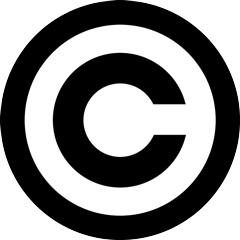
Widely recognized symbol for "copyright"
|
| PUBLIC DOMAIN
|
 |
An image can be rendered Public Domain in one of three ways:
- The creator of the image donated it to the public, and by dubbing it Public Domain, surrendered the exclusive rights they once held to the image,
- or, the copyright originally attached to the image has expired,
- or, the image is for some other reason not applicable for copyright designation.
Whatever the reason, once an image is in the public domain, anyone who wants to use it, can. In a sense, public domain is an absence of any licence on a work. The user does not have to seek permission for use of the image, and usually does not have to attribute it to the creator (though most sites that offer the images do request attribution).
Pixabay is one website that offers users photographs and vector images that have been submitted by creators who agreed to relinquish their copyrights. The website states on their home page that users "can use any Pixabay image without attribution in digital and printed form, even for commercial applications."
|
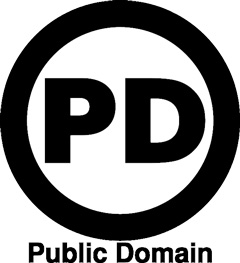
|
| FAIR USE AND CREATIVE COMMONS LICENCE
|
 |
|
Fair Use is a complicated legal right that allows a third party the right to utilize copyrighted images without permission in the interest of disseminating information to the public. It provides an exception to the owner's rights without negating them, and is not necessarily determined by the copyright holder.
Fair Use is similar to a Creative Commons licence, which is usually determined by the copyright holder. Creative Commons grants potential users permission to share the image without requesting permission, but usually requires the image be attributed to the creator.
Though there are not hard and fast rules for fair use, when an instance is called into question, the law considers four factors as laid out in the Copyright Act:
- The purpose and character of the use (ie: commercial, or educational and non-profit)
- The nature of the copyrighted work
- The amount of the copyrighted work used in proportion of the whole
- The effect of use upon the present and future value of the copyrighted work
As you can imagine from number one, an educational use of a copyrighted image
In terms of number four, the law will take into consideration whether the rights allowed by fair use have infringed on the rights of the copyright holder. For instance, if you're using a picture of a movie poster to write a blog about your weekend and the great movie you went to, you're probably in the clear.
If, however, you are a prominent product reviewer and you use a picture of a new smartphone to accompany a scathing review of the item which is read by tens of thousands of people and may have negatively influenced the selection of their new phone - that could be problematic.
In the case of Fair Use (or any licence other than public domain), simply attributing the work to the copyright holder isn't good enough. It will help you avoid plagiarism, but that's a whole different ballpark than copyright infringement. Linking back to the original location or mentioning the name of the artist is polite, and possibly required, but not equivalent to permission.
In any case where your use may be inflammatory - or even if you're just not sure - your best bet is always to either seek permission for use of the work (which might be tricky if you're writing a product review they didn't request), or avoid using the image completely.
OTHER RIGHTS
An important thing to keep in mind when looking through images - primarily photographs - deemed Public Domain or Creative Commons by the artist is any possible rights related the image, that the photographer doesn't determine.
For example: You find a picture a website, where all images are deemed Public Domain by the photographers who submitted them, of Brad Pitt standing in front of a McDonalds.
Sure, the photographer has waived their personal rights to the photograph, the fact that they held the camera up and pressed the shutter button. However, they don't have the right to waive Brad Pitt's rights at his face being used on your blog, and they don't have the right to counteract McDonald's trademarked logo.
When you're about to use a public domain image, make sure there are no trademarked images or faces (famous or otherwise) visible in the shot.
|
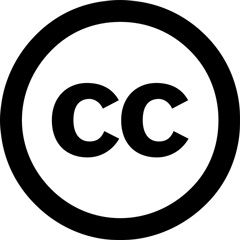
The shorthand symbol for a Creative Commons licence
|
| ALL RIGHTS RESERVED
|
 |
|
You have probably come across images labelled All Rights Reserved. In such cases, the copyright holder is expressing their sole rights to the image, and letting you know no fair use or creative commons licence exists.
To the general user who is searching for images to reuse, this basically means "leave it alone." You can seek permission to use the work, just as you would in any other situation, but you have no right to use that image without that permission. If All Rights Reserved is clearly written on the page on which the image appears, you have no legal grounds to "borrow" the picture.
If you are looking for images for your website, blog, or social media feed, the safest bet is to assume everything is All Rights Reserved unless it specifically says "Public Domain" or "Creative Commons". The term does not have to accompany an image in order to be true, it simply makes the artist's legal argument stronger, should anyone use their images without permission.
If you really want people to see this image you have discovered, a link back to the page it's posted on is your safest bet. This Copyright Infographic may also be helpful in determining where your image-using plans fall on the legal scale!
|
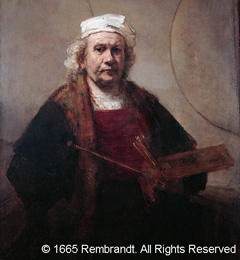
"All Rights Reserved" identification on a painting
|
| THE DANGERS OF USING ANOTHER'S IMAGE
|
 |
|
The Digital Millenium Copyright Act (DCMA) was developed in reaction to the original Copyright Act's lack of specific references to online content. Through the DCMA, an artist can request a Takedown, which results in the removal (takedown) of the website on which their content is being shown without permission.
Prior to filing for a takedown, the artist will probably send the owner of the website in question a Takedown Notice. This notice informs the website owner that they have posted a photo in violation of copyright, and if it is not removed their webpage or site will be taken offline.
A takedown is just one of the consequences of posting images to which you do not have the rights or permission. Copyright holders can take further legal action and you could be faced with a court appearance, fines, or other serious repercussions.
|
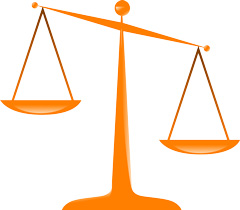
|
|
Please note: this article is intended as general information. It was not written by an attorney, and should therefore not be followed as legal advice.
For more information on copyright law as it pertains to online use, see this Social Media Examiner article, or read the full U.S. Copyright Law.
If you have questions about any of our services or products, don't hesitate to contact us. Our knowledgeable staff is always happy to assist with answers, advice, or suggestions.
|
|
© 2002-2025 - KeenART Media Ltd.
|
|
| |
|

